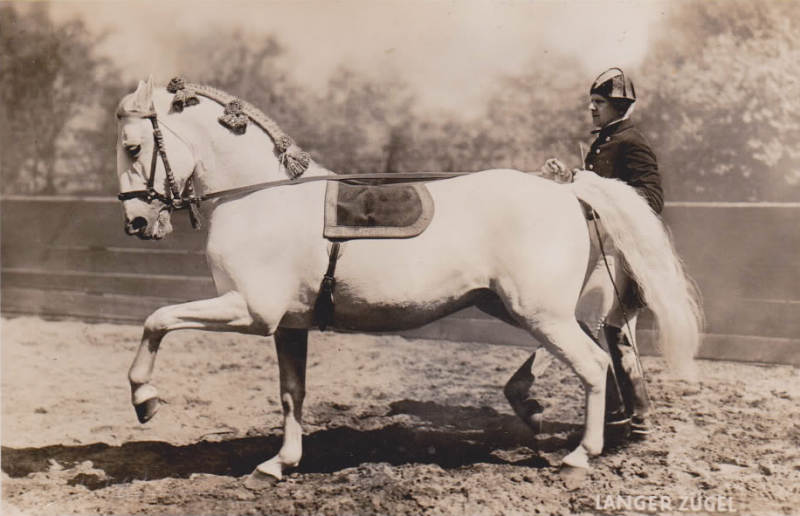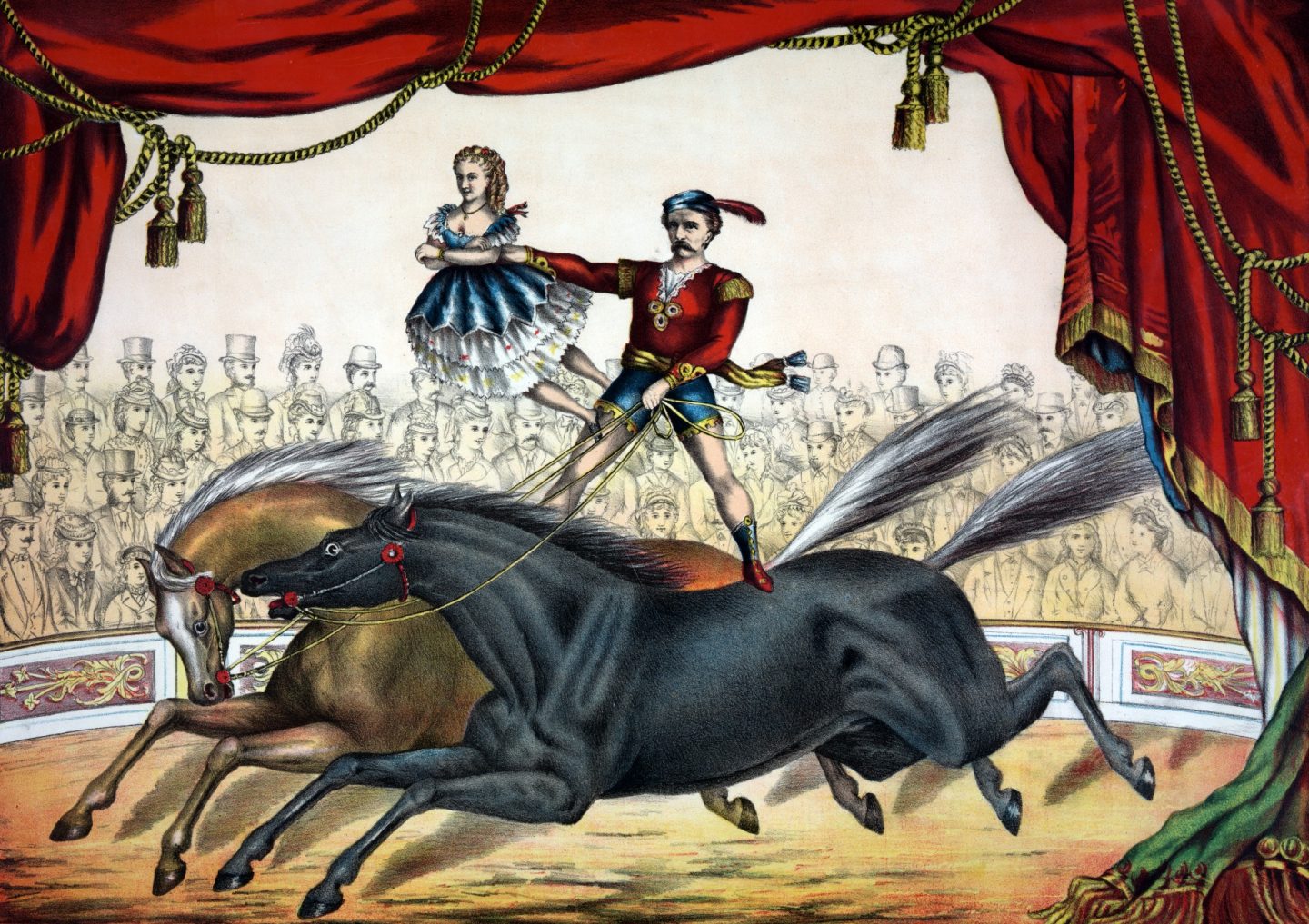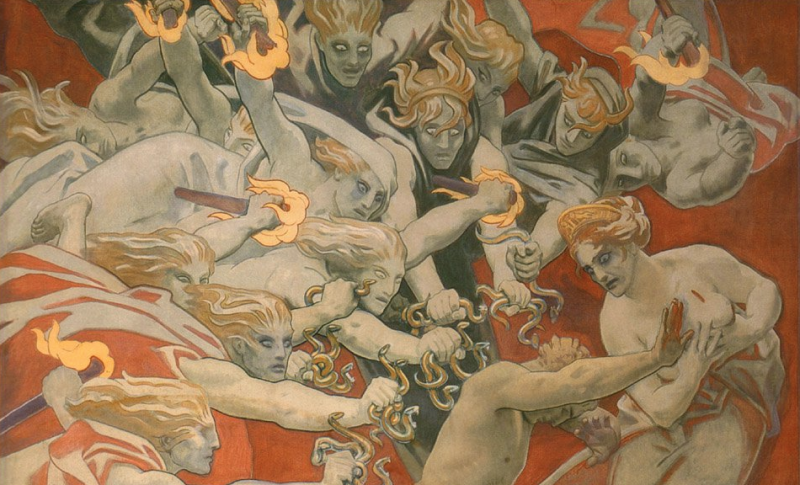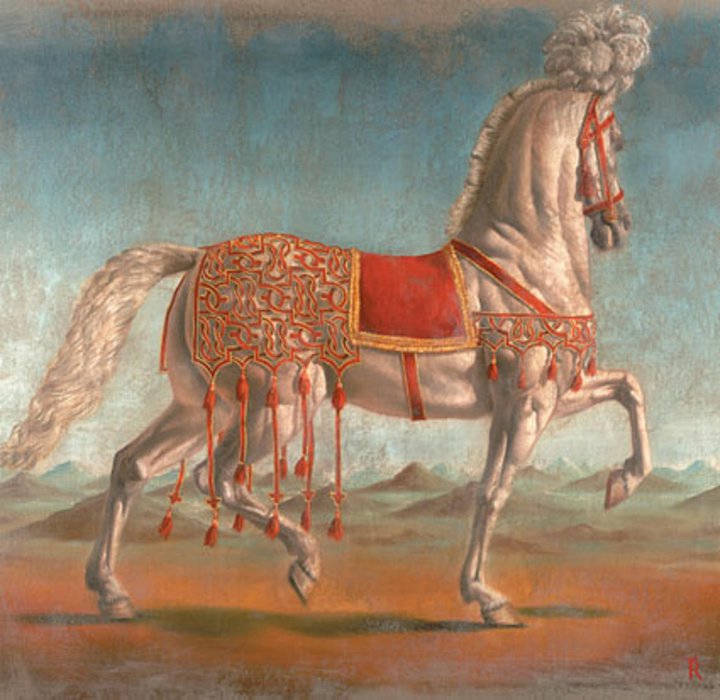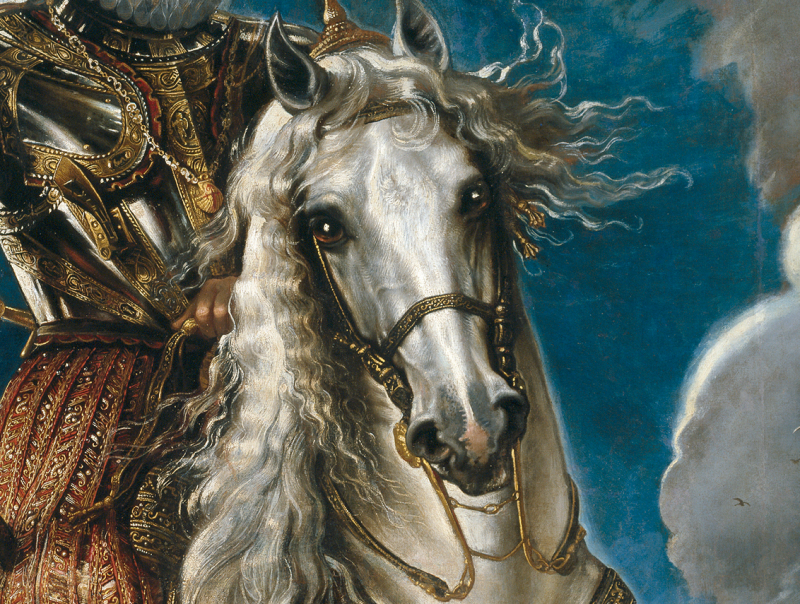
Image: Detail from “Equestrian Portrait of the Duke of Lerma,” 1603, by Peter Paul Rubens: © 2020 Kip Mistral
[I was asked to contribute a guest post over at StreamHorseTV, which is just about to have a re-launch by new owners Tom and JoAnne Pierce. I wish them great success with their upcoming new platform! I chose to do a rare autobiographical piece so have a laugh on me
 ]
]
What an odd title for an article…how could I possibly know you by the horse you ride?
First, let’s contemplate the horse and rider presented to us. From a practical perspective, I might know something about you if the horse you have chosen—or seems to have chosen you—has or doesn’t have the conformation, athletic ability, temperament, and level of training that are compatible and well-matched with your level of experience and expectations. I might know something about you if you must have a horse of a certain color or gender. I might know something about you if you vastly prefer one riding discipline over another.
But the most important criteria to me are the esoteric ones…do the horse and rider have a relationship that demonstrates trust and bonding? Is the rider light of hand and seat, gentle and patient, following the horse? How discreet or visible are the aids? Is there a minimum of tack and “devices” on the horse? Is the horse well-balanced and forward-moving? Does the horse seem to be given credit and appreciation as a generous, intelligent partner? Are soft questions asked and soft answers given?
Or not?
I am reminded of the Greek myth of Pegasus and Bellerophon and the charmed Golden Bridle given Bellerophon by the goddess Athena because he could not catch Pegasus or ride him without it. There are several versions of the myth but the one most interesting to me tells that when Bellerophon took off the bridle, Pegasus flew away, never to be caught again. He wanted no part of Bellerophon when he wasn’t controlled by the spell of the Golden Bridle.
The part that the Golden Bridle plays in the Pegasus myth speaks to the metaphor of using leverage to get control of some aspect of human experience. Jungian psychology views the horse archetype as representing freedom, strength, and emotional force. When we control the horse, we can employ his power to do our will. More importantly, the horse can also symbolize our control over ourselves, and our ability to be disciplined, to master our own human nature. In this way, the horse can be a force for transformation and a guide for our rider’s journey.
When I contemplate such a question, I turn to the classics for guidance.
The great European masters had the highest of standards and expectations for a horseman and the highly-accomplished riders that the French call “écuyers.” It was very common in the massive body of French equestrian literature that reaches back to the 16th century, for the authors to mourn the loss of the true horseman.
In 1731, François Robichon de La Guérinière was complaining and explaining in his book “School of Horsemanship”, Chapter I “Why There Are So Few Horsemen & the Qualities Necessary to Become One”. Nearly 300 years later, we are asking the same questions! Here, his initial comments:
“All arts and sciences have principles and rules governing the methods resulting in those discoveries that lead to their perfection. The School of Horsemanship is the only art for which it seems there is only need of practice; however, the practice, stripped of sound principles, is nothing more than routine that only results in a forced and uncertain performance and a false brilliance that fascinates the demi-connoisseurs, who are often amazed by the horse’s kindness, rather than by the rider’s skill. This is the reason for the small number of well-trained horses and the lack of ability presently seen in the majority of those people who call themselves horsemen.”
These masters concurred that the horse should be treated with great respect and appreciation, rarely if ever punished, and handled and ridden with lightness and elegance, so that all exercises and movements should look as if they were the horse’s idea. The reins held in such hands are those of the charmed Golden Bridle.
One day some 10 years ago, I looked around me at the stable where I was boarding my Andalusian, Valentín. And it seemed that everywhere I looked people were pushing or pulling their horses around, often roughly, reflexively, unconsciously…and uncaringly.
I’d had 11-year-old Val about eight years by then and I started wanting to make sure that I was the opposite of what I saw around me. I didn’t know then what it might be called, but I was looking for the Golden Bridle.
When I realized the treasure of horse/rider biomechanics knowledge a riding instructor friend had to offer, I decided I wanted to learn to ride Val with my seat and take the emphasis off even our simple snaffle bridle to guide him.
“Sure,” she said. “But you can’t ride until you can make yourself energetically desirable to your horse on the ground. If they’re not ‘with’ you on the ground, they won’t be ‘with’ you from the saddle.” How do you make yourself energetically desirable to your horse? According to Stacey you begin by taking all his tack off, put his halter on, put two fingers on the inside of the noseband with only a hair’s touch and no pressure, no other commands or aids are allowed, and you walk on with him.
But the walking on doesn’t happen. Horses are used to being pulled, pushed, and dragged around in general. Once they know that isn’t happening, AND you can’t use any voice commands, clucking, any urging whatsoever, and you are only allowed to bend your knees a little and rock back and forth and scoop your energy forward without moving your feet, even your own beloved horse may look down at you and grin a big toothy grin, as if to say, “Hi Mom. You’re way down there! I’m taller than you, aren’t I?”
“Hi, Val. Yes, you’re very tall. Come on, let’s go.”
“I can’t hear you.”
“Come on Val, let’s go, you know what to do.”
“Sorry, I can’t hear you.”
When Val wasn’t looking down at me with an amused glint in his eye, he was looking out into space. As I struggled with this lesson on multiple levels, he was taking a vacation.
Decades of leading a horse here and there where I want him to go, and suddenly I’m not the general anymore. I’m not anything except frustrated because, without some kind of pressure, my horse is not only laughing at me but is just as confused as I am about what to do now. For more lesson hours than I care to count, we stood together rooted in the arena sand, not able to go anywhere because we didn’t really have a common language of fully reciprocal partnership.
As I contemplated my boots, I had to admit to myself that suddenly after 50 years of riding, I didn’t know anything and couldn’t do anything. And had to acknowledge that Val, who loved me after all our years together, wasn’t energetically attracted to me, now that I knew what that was supposed to look like. So I was a little humiliated and even a little angry with myself as I realized that I, like almost everyone else, had been living in the land of illusion. I probably actually had softer hands than many, and probably was even more gentle than many with my horse, but the fact that we were stuck in the sand spoke for itself. Without pulling on the lead rope or using any other aids, I couldn’t make him go. There was no key for the ignition.
And my frustration spoke nasty blaming things! After all, Val knew what I wanted and what to do, or he should after all these years! Why can’t he play along?! But Stacey muttered from the side, “Do you want to learn to ride by your seat, or not?”
I realized that I had to decide if I was going to keep going in this new direction. “This is hard!” I thought, feeling a lump in my throat growing, the way it does just before you start weeping. “It wasn’t that bad before, maybe I want too much, maybe I’m reaching too far. Maybe I’ll find out I can’t do this!”
The next session a light bulb went on in my head, as I stood as usual for my more or less stationary lesson with Val. I realized that I still had the dominance paradigm in my head, even though I wasn’t physically acting in any overt dominant way. That’s where the frustration and anger came from…my head.
As I realized this, I decided to just become present with Val, and enjoy his company despite the fact I had been paying perfectly good lesson money for weeks to stay anchored stock still in the sand with Stacey standing silently outside the arena where I was being tortured by myself. Val and I looked at the blue sky and listened to the birds together peacefully. When I next asked him to go with me with my body language, he walked on. “Now we can start,” said Stacey. “Go tack him up.”
Breathing was a big deal to Stacey. “Everyone knows when you hold your breath, you tense up, right? And when you’re tense, you hold your breath and turn into a block of human wood. And if the human is tense, naturally the horse gets tense. Imagine the joy a tense horse must feel to carry one of those human blocks of wood around on his stiff back, by the way.”
“Don’t forget to breathe,” Stacey would say from the sidelines.
“I AM breathing!”
“No, you’re not.”
“How can you tell?”
“I just can.”
We went through this little patter so many times I actually started to learn when I was breathing and when I wasn’t, and could then make an effort to breathe on purpose. I noticed that when I was breathing, Val looked and felt a little softer.
And there were many other new rules. I couldn’t pull on or press with a rein to bend or turn my horse. I could only lift my inside rein one or two degrees, keep my elbows softly at my sides, turn my shoulders and pelvis to match Val’s, and not intentionally use my legs, because turning my pelvis was enough to move my legs the only fraction that he needed to understand the subtle aid. I could only use my seat to move him forward and help turn him. And breathe while I did that. We were getting smoother and smoother. Or so I thought.
“Why is your right leg so grippy?” Stacey complained to me one day as we circled her at a sitting trot.
“It’s not grippy, I’m not doing anything different with it than my left.”
“Yes, you are, you’re gripping with it.”
“How do you know?”
“I just do.”
I found this a little insulting and started to object when I remembered that a few years earlier when I was in Scotland visiting my friend Sylvia Loch at her wonderful old estate, and her assistant trainer was giving me a lesson on her own horse.
“Kip, do you know where your right leg is?” she asked.
I thought and thought. I looked up into the sky for inspiration. I looked down at my leg glumly. “No,” I confessed. “I guess I don’t know where it is without looking at it.”
With these two events in my mind, I made an appointment with an impressively credentialed performance sport therapist in Tucson for an evaluation and to begin some apparently much-needed therapy.
“What’s the verdict?” I asked.
“Well, your pelvis is rather severely asymmetrical from your old injuries, which you already know, and while your left psoas muscle is long and loopy, your right psoas muscle is tight and bunchy. It’s a compensation pattern.”
I took this information back to Stacey, victorious. “I’m not gripping and here’s why…”
“I don’t care why you’re gripping. You’re gripping.”
I learned in our laboratory that if both you and the horse aren’t relaxed, you can be sure no magic will happen.
But magic might happen when you least expect it. One lesson morning, Val was in some far-off mental place. He was being lazy and leaning on the bit, sometimes quite heavily. So Stacey suggested that we play around with the effects of using the hands versus using the core to balance us and get him off his forehand. All I got from using my hands was a stiff neck (mine), but when I put my core into overdrive, suddenly Val woke up, became a Ferrari, put himself under me, and turned our trot on the circle into a little passage.
He was so excited to feel his own gears click in. He became balanced, powerful, light and all his attention was in the moment, in that circle, with me. We made it about halfway around the circle and then we fell apart. I was ecstatic, though not sure exactly what had happened except I liked it a lot, halted Val, and stared at Stacey. “Did you ever tell me that before?!” I asked.
“Only about 4,000 times,” she answered sarcastically. “You just didn’t hear it until now.”
What Val and I found out individually, and together, is that when we push through a layer of apathy or ignorance or mood, or some other limitation, this is where we find the gold. It’s amazing to me how much a horse can enjoy his education, even if it can be very hard work sometimes. It’s clear to me that the process and prospect of the training can be just as overwhelming to our horses as it can be to us humans, but if the work is handled with understanding, diplomacy, and appreciation, they will come out the other side of a challenge with great pride in themselves and even more confidence.
Persistence, dedication, and continuity pay off in the development of those moments of “aha” and then as you string them closer and closer together as they multiply, suddenly you realize you are really making progress. The rider’s journey is mental, emotional, spiritual, physical, but so is the horse’s. Separately we each work through our own issues and then come together for a few steps in perfect balance.
Then we are both weightless together and can’t tell where one ends and the other begins. Val looks for those moments as much as I do.
He doesn’t need me to be a great classical master and I don’t need him to be an Olympic athlete.
But this is the kind of journey I want to have…to become the rider I am learning to be, grateful that Val is the horse I want to ride. Over time we have had many glimpses of the Golden Bridle connecting us.
Except, the Golden Bridle is invisible; you can’t “see” it. But you will know it when you “feel” it.
And I will know you by the horse you ride.
https://streamhorse.tv/blog/f/i-know-you-by-the-horse-you-ride-in-search-of-the-golden-bridle
